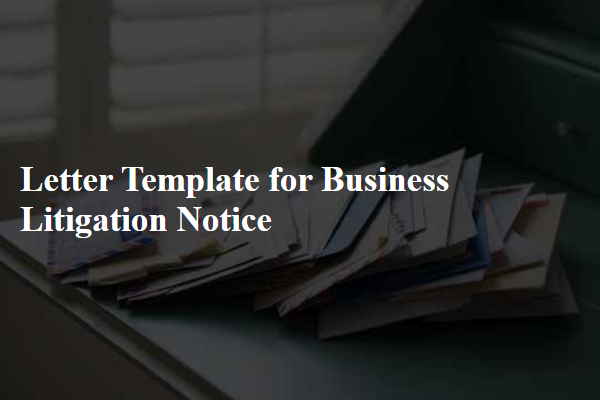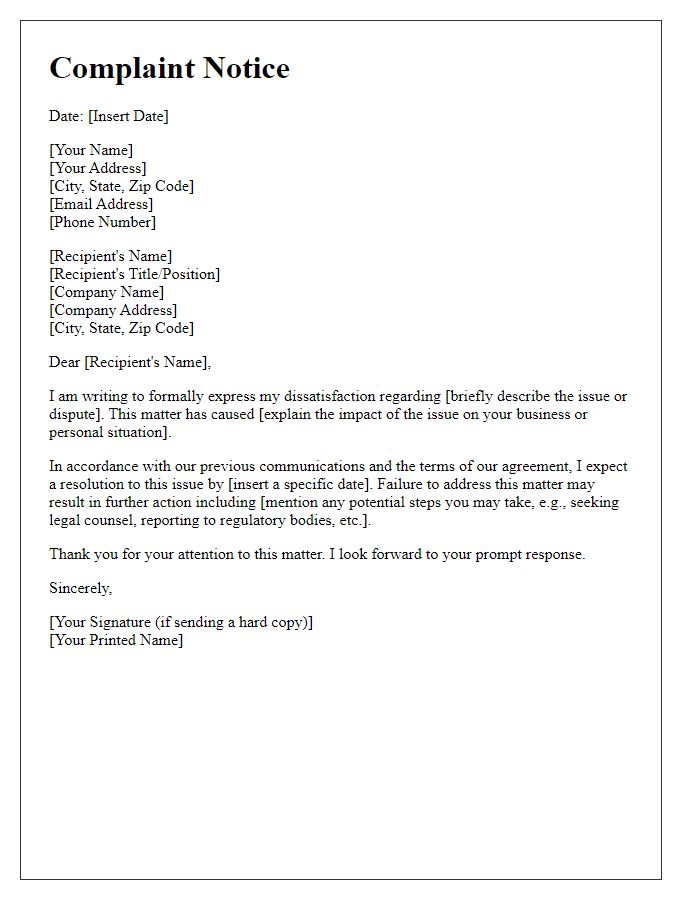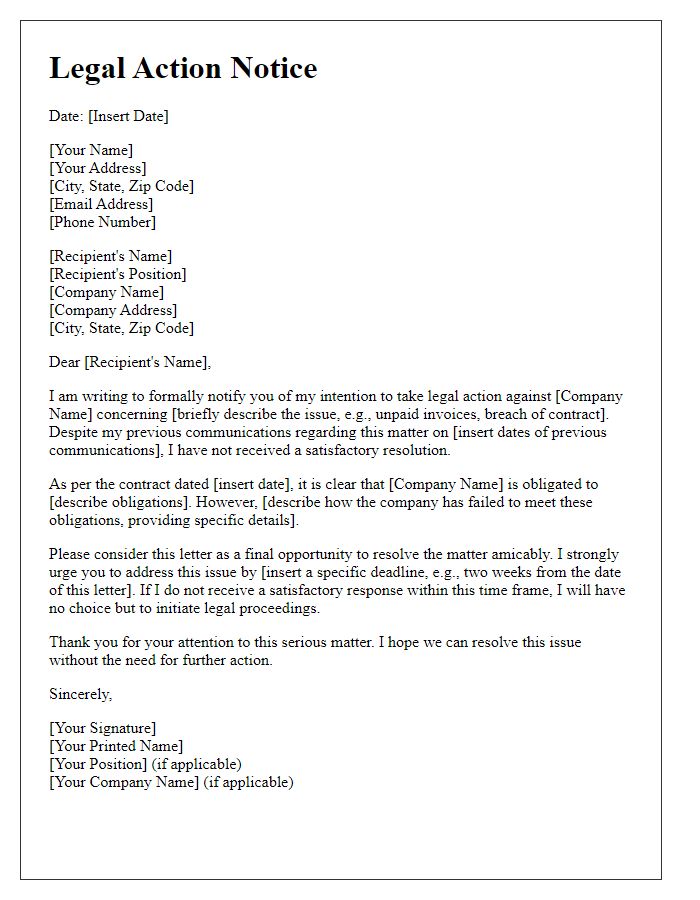When it comes to navigating the complexities of business litigation, having a well-crafted notice letter can make all the difference. This essential document not only communicates your intention but also sets the stage for potential negotiations or legal proceedings. Crafting a clear and concise letter can help ensure that all parties are on the same page and mitigate misunderstandings. Ready to dive deeper into creating an effective business litigation notice? Read on for our comprehensive guide!

Party information
The business litigation notice must include essential party information, including names of the parties involved, such as the plaintiff (the party initiating the lawsuit) and the defendant (the party being accused). Additionally, it should specify legal entities, including corporation names (for example, Smith Enterprises Inc.), partnership details, and any identified representatives or attorneys associated with each party, along with their contact information. Dates relevant to the case, such as the filing date of the complaint and deadlines for responses, must also be clearly laid out to ensure compliance with legal procedures. Jurisdictional details, including the court name (like Superior Court of California) and case number, provide a precise framework for the legal process. Lastly, any relevant facts surrounding the dispute or underlying claims, such as breach of contract events or negligence allegations, add crucial context to the notice.
Legal basis
Business litigation notices often cite specific legal frameworks, such as the Uniform Commercial Code (UCC) for contractual disputes or the Federal Rules of Civil Procedure regarding procedural issues. Jurisdiction can significantly impact litigation, with references to state-specific laws, for example, California Business and Professions Code for competitive disputes. The notice may also invoke applicable statutes of limitations, typically ranging from two to six years depending on claim type. Furthermore, it is essential to include relevant case law that may guide the litigation, emphasizing precedents established in courts like the U.S. Supreme Court or state appellate courts. Details about the parties involved, the nature of the dispute, and the sought remedies should also be explicitly outlined to provide a comprehensive legal foundation for the notice.
Specific claims
In commercial disputes, precise claims must be documented to ensure clarity and enforceability. This involves outlining specific grievances against parties involved, such as breach of contract or failure to deliver goods as stipulated. Quantifiable damages should be stated clearly, reflecting losses incurred from these actions, including lost profits, unforeseen expenses, or diminished business reputation. Important dates, such as breach occurrence and notification timelines, should be included to establish a clear timeline of events leading to litigation. Documentation of prior communication attempts serves to demonstrate the effort to resolve issues amicably before legal action. All claims should reference pertinent laws or regulations, ensuring that the notice adheres to legal standards to facilitate potential court proceedings.
Deadlines and timelines
Business litigation notices often include critical deadlines and timelines that must be closely monitored to ensure compliance with legal protocols. Filing deadlines typically adhere to the jurisdiction's civil procedure rules, which may outline specific timeframes for submitting documents such as complaints or responses (often within 21 to 30 days from service). Discovery periods, which involve the exchange of evidence and information, are usually set by the court, often spanning 30 to 90 days, depending on the complexity of the case. Additionally, motions for summary judgment must typically be filed at least 30 days before the trial date. It's essential to keep track of any pre-trial conferences or hearings, as these may also have associated deadlines that must be met to avoid sanctions or unfavorable rulings in courts like the U.S. District Court or various state courts. Failure to adhere to these timelines can jeopardize a party's position in litigation, potentially leading to dismissal or default judgments.
Contact details
Business litigation often arises from disputes that can involve contracts, intellectual property, or other legal matters. Effective communication is critical in legal contexts. The contact details section of a business litigation notice should include precise information to ensure timely responses. Include the complete name of the individual or entity (i.e., XYZ Corporation) involved in the litigation. Provide an accurate physical address (e.g., 123 Business Rd, Suite 456, City, State, ZIP Code) to facilitate correspondence. A valid primary contact number (e.g., (555) 123-4567) is essential for immediate communication needs. An email address (e.g., legal@xyzcorporation.com) must also be included for digital correspondence, especially in a context where quick exchanges of documents and information are necessary.













Comments